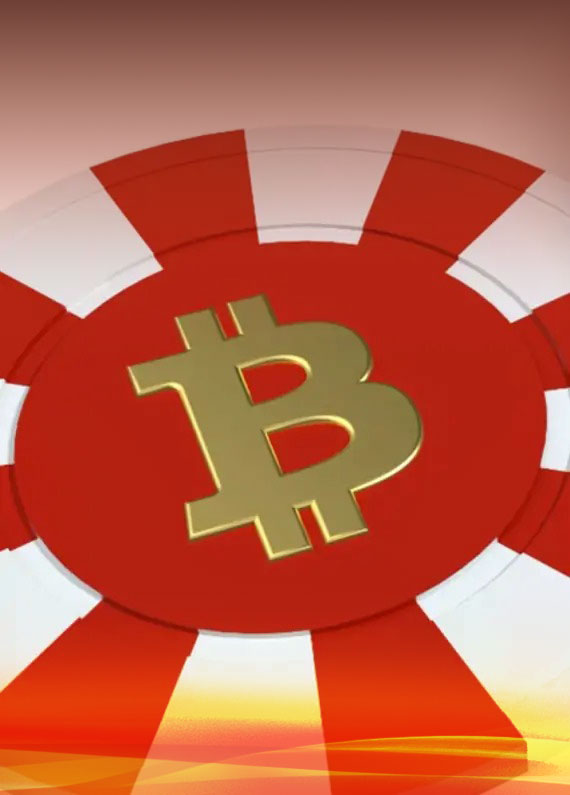Your Online Poker Bluffing Guide: What It Is and When to Do It

Let’s paint you a little picture. You’re sitting in on a round of No-Limit Texas Hold’em at a cash table. You’re playin’ for cold, hard cash here at Ignition Casino. You receive your hole cards: eight-four suited, both of which are hearts. Not really a killer hand, hey? But you don’t let it faze you. You’ve got this. So, you go ahead and open. You move through the motions, calling the big blind, and out comes the flop with a king-three-five (two hearts and one club). You carry on, calling the big blind again. The turn is a nine of clubs. You throw in a wager and the big blind calls. Next comes a six of clubs. You’re holding nothing, but you go all-in anyway. Spooked by your confidence, your competitor folds and you conquer the game!
That, mate, is one epic poker bluff. If we’re honest, there’s no feeling like pulling off a sweet bluff. Making your opponent fold when you’ve got nothing in your hand? That’s BDE if we’ve ever seen it.
Of course, there’s a right time to bluff and a right time to bow out. Here, we walk you through everything you need to know about bluffing: what it is, when to do it, and how to master the hell out of it.
The “What”: Definition of a Poker Bluff
So, let’s start with the first key question: what is a poker bluff? The term can actually be traced back to 1791, with many speculating that it originates from the Dutch “bluffen” which translates to “to brag” or “to deceive”. That word was later used in card games where weak-handed players could fool their competitors into folding.
Nowadays, there are heaps of ways to trick your opponents in any given poker game. That said, it’s important to remember the core definition of bluffing. A bluff is only a bluff when you have a weak hand and you raise or bet anyway in the hopes you’ll get your opponent to fold.
Next, let’s talk about the different types of bluffs you can use to your advantage.
The Pure Bluff
Just like standard poker hand rankings, bluffs can be ranked, too. The weakest type of bluff is a pure bluff, which is also sometimes known as a naked bluff. This is when you wager or raise with a hand that has no outs; in other words, that hand can’t possibly contribute to a hand that can trump your competitor.
So, if you’re already at the river and you haven’t made a hand, then all bluffs are considered pure bluffs. Even in that scenario, though, certain bluffs are stronger than others – but don’t worry, we’ll get to that.
The Semi-Bluff
A semi-bluff is a bluff made with a poker that has a bit of equity to it. This type of hand is likely still weaker than your competitor’s but, if they don’t fold, you’ll still have a shot of making a better hand in a later round. An example of a classic hand to a semi-bluff hand would be an open-ended straight draw, where you’ve got four consecutive cards leading to a straight (ideally your two hole cards and two on the board).
Now, let’s talk about a controversial topic. Many online gamblers have strong feelings about the status of gutshots (hands with four outs rather than eight or nine) and backdoor draws (when you only have three out of five cards you need). The question: do these count as semi-bluff hands? Honestly, while we get into the nitty-gritty details, we’ll spare you. You really don’t need to worry about this stuff anyway – it’s just semantics.
The most important takeaway is that you have two ways of winning with a semi-bluff:
- Force your opponents to fold
- Make the stronger hand by the river
The “When”: Knowing When to Bluff
It’s that time – that time in the guide where we talk about strategy! Don’t stress, we won’t be getting too technical – we’ll only tell you what you absolutely gotta know.
If you play real money poker and you don’t bluff (like ever), your competitors will catch onto you. Eventually, they’ll stop paying you off when you wager or raise because they know you’ve actually got the goods. Remember that a healthy balance of value bets and bluffs is sure to deliver the highest rewards.
But the real tricky part? Knowing when to bluff. If you’re a beginner, one of the best strategies is to bluff sporadically. Bluffing is a powerful weapon and it needs to be treated that way. Exercise caution because bluffing can cost you a lot if you do it wrong. Here’s an easy one: in pre-flop play, do not bluff. Instead, open your strongest hands in an early position. Then, widen your range as you go around the table. Do the same thing with your third and fourth bets as well.
Once you get to the flop round, things get a little tricky. So, stick to stronger semi-bluffs to keep your strategy sharp. If you’ve got an open-ended straight draw, you’ve got a cool eight outs. If you’ve got a flush draw, you have nine outs. So, even if your competitor doesn’t fold, you’re still rockin’ a 1-in-3 chance of completing a hand with the river. Sure, it’s not exactly Game-Theory Optimal (GTO) poker if you play this way, but it’s solid for a newbie.
Double and Triple Trouble: Double-Barrelling and Triple-Barrelling
Allow us to walk you through a little scenario. You’ve got a flush draw on the flop. You choose to bluff. Your opponent calls. Now what? Your instinct might be to bet for a second time, pushing your competitor closer to folding. This strategy is called double-barrelling. If even those two don’t secure your opponent’s fold, you might be tempted to go for that third bet (this is known as triple-barrelling).
We won’t lie to you: these are sticky situations to be in, especially if you’re a beginner. In the early stages of your gambling career, try not to sweat these small details too much. Start by focusing on the card of that turn. If it’s a blank (aka doesn’t connect with the others on the board or in your hand), then go ahead and push for that double-barrel. But if the card does connect with the board or your hand, just leave it be and check for now.
When it comes to firing off that third barrel, we suggest pumping the brakes on that if you’re a relative beginner. You’ve gotta walk before you can run, mate. So, save the triple-barrel action for when you’re a little more seasoned.
The Next Level: Bluffing 102
Well, legend, you’ve made it to the next level of your bluffing education. Strip off those training wheels – you’re riding solo now. Now that you’ve played poker for a while and you’ve gotten used to semi-bluffs, let’s go a little deeper into the world of bluffing. Intermediate players have heaps of good spots to try out speculative bluffs; the key here is to target competitors who are more likely to fold.
The easiest speculative bluff to pull off is no doubt the simple check-raise bluff during the flop round with a backdoor combo or a gutshot draw. If you’re in a later position and you call from the big blind, you can usually prompt your opponent to fold by check-raising. If they do push forward, you can feel pretty confident that a double-barrel or a triple-barrel approach will do the trick. Plus, going through the game for longer boosts your odds of making a better hand.
Want even better chances of success? Okay, okay, that’s an obvious yes. Boost your chances by taking blockers into consideration. So, let’s use the example we mentioned above where the board was as follows: king-three-five-nine-six. There are two ways that your opponents could land a straight: eight-seven (aka 98765) or four-deuce (aka 65432). But hang on a sec – you’re holding both an eight and a four. Know what that means? You’re blocking your opponents from holding some of the combos that would have beaten you. If you’re in this position, a triple-barrel is a kickass approach to use.
Are you ready to tap into your deception skills? Are you ready for trickery and excitement and anxious anticipation? If yes, it sounds like you’re ready to dive headfirst into your bluffing career. With these helpful tips and a whole lot of practice, you’ll be bluffing so well that you even start believing yourself. Sounds crazy, but trust us – you’ll see it soon enough.
Best of luck at the tables, legends!



